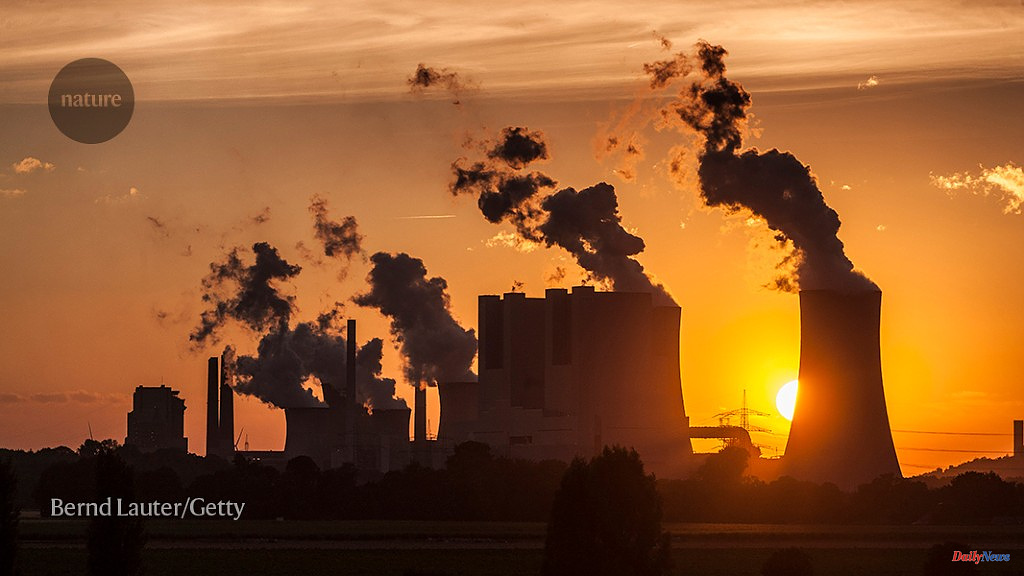Globally, it is essential to phase out coal power plants in order to halt climate change. However, king coal is not going away. Because global strategies don't adapt to local realities,
Coal power plants produce the most carbon dioxide per kilowatt-hour than natural-gas facilities. They are also the most polluting form of electricity generation. Coal was responsible for over one-third global electricity generation in 2019 and 26% global greenhouse gas emissions1. This is roughly the same as all other emissions from land use and agriculture. Many analyses2 show that global coal consumption must be reduced by between 30-70% and 2030 in order to meet the Paris climate goals.
But, progress has been slow. Despite the fact that some industrial countries have placed weaning from coal high on their political agendas, many low- and medium-income countries still consider it essential for economic growth. Environmental concerns are much lower.
Initial energy needs declined during the COVID-19 pandemic. From 2019 to 2020, coal-fired power generation dropped by 4%. However, in 2021 it rose by 9% to a new record high. Recent events have shifted power generation to coal, if not. Natural-gas supplies are at risk due to the conflict between Russia and Ukraine. Typically, Russia supplies about 40% of European gas imports. Germany is one of the countries that are looking at coal as a last resort. Rising gas prices could also help to revive coal in Asia.
Globally, there are 2,429 coal power stations with a combined capacity of over 2,000 gigawatts. From 2017 to 2022, the total coal power plant capacity increased 110 GW. The pipeline plants will absorb 60-75% of the global emissions budget if they are constructed and run for 40 years together with existing plants.
This trajectory must be changed immediately and with targeted action. If the global community does not target support that is compatible with political realities, a global phase-down cannot be achieved.
We created detailed case studies covering 15 countries from 2018 to 2020, representing 84% of the current global coal power-plant capacity and 83% of the global pipeline for new coal plants. Each case study was based on interviews conducted by researchers with analysts, policymakers, and non-governmental organisations. The interviews were done in a uniform framework to allow for fair comparisons. (Those conducting this work are listed as co-signatories; see go.nature.com/3yy5ghy for details)
These four categories can be divided into four groups: Phase-out regions, which are actively building or reducing their dependence on coal, established coal users, phase-in countries, and regions that export. (See "How we categorised coal-using economies"). Each category presents its own set of political challenges.
Type
Definition
Exemples
Phase-out
There is less capacity being built than what is currently operational. There are no planned power plants other than what is currently being constructed. Since 2000, at least one plant has been retired
Chile, Germany and the United Kingdom are all available.
Established
Construction of new capacity is underway or planned. Minimum of equal to the pipeline's operating capacity. Operating capacity less than retired capacity
China, India and Turkey
Phase-in
Greater coal pipeline than operating capacity
Vietnam, Pakistan
Exporter
Average coal production 2010-20 is at least 1.5x higher than the consumption
Australia, Colombia, Indonesia, South Africa
Sometimes it is assumed that raising the carbon price or eliminating subsidies for coal will make a difference. It won't always be so. Renewables can be competitive with coal in economies that have strong legal frameworks and easy access to capital. However, there are many other regions that have vested interests in the coal industry, lack of financial capital and intellectual capital to invest in new energy systems, as well as other issues that could undermine efforts to reform subsidies and introduce emission fees. Each category has its own challenges and requires specific policy priorities to spur change. Policies that work in one area may not work in the other.
China accounts for about half of all existing and planned coal capacity, but other countries should not be overlooked. If all phase-in countries continue to embrace the use of coal, their combined emissions could exceed those of China. These countries' coal plants will produce more emissions than all the coal plants in India. Each group is important.
The United States, Germany, Chile and Germany are among the countries that are phasing out the use of coal. (See 'Four types of coal use'). Most countries that are actively phasing-out coal are OECD nations with high per capita incomes and the financial and technological capabilities to invest in renewable energy and better energy efficiency5.6 Their coal plants currently have a total power of 360 GW. It should drop to one-quarter by 2030.
These regions are where they are today because of their carbon levy. The United Kingdom implemented a carbon tax in power and industry to supplement the carbon price in the European Union Emission Trading Scheme7. A high-ranking commission in Germany negotiated the coal exit. This included generous payments of EUR40 billion (US$42billion) to power companies and regions to get rid of coal. The United States saw a reduction in coal use of almost half its 2007 peak due to lower natural gas prices and rapidly falling costs of wind power and solar energy. This was despite strong political support for the industry. The economic motivations behind Chile's announcement in 2019 to eliminate coal by 2040 are rooted in the country's high solar potential and protection of the market from volatile gas and coal imports.
Even if the declines continue as expected, the phase out economies will still produce 90 GW of coal by 2030. This will cause emissions equal to those produced by 75 million cars. These transitions will cut emissions and encourage innovation. National support is required for research and dissemination of clean energy.
The nearly $4 billion worth of tax breaks that coal subsidies have received in the United States should be phased out. Instead, they should be channeled to low-carbon energy sectors. Alternative income streams should be offered to coal-dependent areas. West Virginia, for example, could benefit from similar measures to the ones in Germany.
Multi-level governance and international cooperation can help to remove coal-producing regions from the grid more quickly. For example, rising carbon prices in Europe are likely to push coal out of the energy mix, even in countries that don't have plans to phase out the fuel, like Bulgaria. Government accountability can be further raised by making strong international commitments such as the G7 and G20.
China, India, and Turkey are all middle-income countries which have seen significant economic growth and decreased poverty. Coal-fired plants, which often require little capital, were the first to meet rising energy demand. China and India are two prime examples.
These countries have a government that controls energy prices. They also regulate electricity markets and energy markets. This makes them less vulnerable to the falling costs of renewable energy. State-owned companies dominate the entire coal value chain, including transport, mining, and electricity generation. Incentives are often misaligned because of vested interests. For example, regulators can purchase power from favourable agreements to protect coal-fired power stations.
These regions can have a large amount of coal-based economy. In India, for example, 15 million jobs can be directly or indirectly linked to coal. Coal is often used to power energy-intensive industries like iron, steel, and cement production. These industries require many workers.
These countries need to focus their policies on reforms that reduce corruption and vested interests, lower state control over energy sectors and create an environment for alternative energy systems. These countries must also develop alternative economies. This includes investing in infrastructure and training the workforce to support manufacturing or information services.
Developing economies could be able to gain access to markets in industrialized nations that require them to buy green materials if they sign agreements to decarbonize energy intensive industries, such as iron, steel, and cement production. These countries must decarbonize so that industrialized countries cannot stop their own decarbonization. They can't claim that emerging economies have unfairly competitive advantages due to less stringent climate policies. International organizations can facilitate technology transfer as well as provide financial and policy support.
Countries like Vietnam and Pakistan, which are on the verge of increasing coal-fired power generation tend to have low per-capita incomes as well as a rapidly growing energy demand. For example, Vietnam's energy demand has grown by more than 10% annually and 56 coal plants have been built.
The political agenda places electricity affordability, reliability, and security very high. State-controlled energy prices can cause power companies to go into debt, making it impossible for them to finance a switch to coal alternatives. Even though phase-in countries are not likely to have the same coal-specific vested interest as established countries, the ruling elites that are closely tied to energy may still be able to provide unfair advantages for coal, such a better access to the electricity network.
High capital costs for renewable power plants and high investment risk are two of the major obstacles to phase-in countries. This is especially true in areas where there are not enough electricity grids to support intermittent renewables. Renewable energy is often not accepted by decision makers. We were told by officials in Vietnam that they lack the ability to manage an energy system that relies on intermittent solar or wind power. Vietnam rose from a virtually zero solar power level in 2018 to become the top-ranked country in Southeast Asia for solar power in 2019. Positive examples from 'peer nations' can be a great inspiration for other countries and help to ease deeply rooted reluctance. The arrests of environmental activists in Vietnam including Nguy Thi Khanh (the powerhouse behind much of the improvement) show how strong the resistance can be and how sophisticated intergovernmental support must be.
International finance and proof of concept projects can help lower barriers. The Asian Development Bank, for instance, announced in November that it would purchase coal plants and mines across Asia. It will begin with a pilot project at the Philippines to end the plant's life before its expected end. These purchases give utilities the capital they need to invest in alternative options, such as storage and grid capacity. These purchases could also be used to demonstrate energy transition success.
There are many socio-economic realities that exporters face, including South Africa, Colombia, Indonesia, Indonesia, and Indonesia. Some countries, like Australia, have high per capita incomes while others, such Indonesia, have low. South Africa uses a large amount of the coal it mines. Colombia is mainly an exporter.
They all have one thing in common: economies that are heavily based on extractive industry, with coal revenues making up a higher percentage of gross domestic product than the global standard. Indonesia's public budget is about 5% because of coal exports. Regions heavily dependent on coal royalties have often enough political influence to delay national actions against coal mining.
These countries will likely need to phase out coal as part of an economic diversification strategy that includes other non-exempt economic activities and comparable high-paying jobs. Australia's solar-powered hydrogen export economy looks promising. Alternatives are not as obvious in other countries, like Indonesia. However, they could include labour-intensive manufacturing industries, such as textiles and assembly of electronic equipment.
Many of these countries are dependent on coal for their economic growth, so carbon pricing and other similar instruments are not likely to have much impact. For example, Indonesia implemented a very low carbon price but was exempted from the political pressures. An emissions-trading scheme due to start in July is intended to cover coal, but has ample loopholes (see go.nature.com/3hgybv9). Sometimes-violent protests have been triggered by attempts to reform fossil fuel subsidies.
International efforts are crucial. The United Kingdom, France, Germany, the United States and the EU offered South Africa $8.5 million to help with socially just transitions, power-sector carbonization, and clean-energy diversification at the COP26 UN Climate-change Conference in Glasgow, UK. Indonesia is open for similar support. It remains to be seen if such schemes can deliver on their high expectations.
International cooperation is essential for every category. It will not be possible for many nations to accomplish this feat alone.
International agreements can be used by countries that are already working to phase out coal. They should also support other regions with technology, finance, and capacity building. Financial support is required for phase-in countries to invest in renewables, storage capacity, and grid capacity. Agreements that promote the decarbonization and promotion of energy-intensive industries like steel and concrete and a preferred market for green materials could be the most beneficial to existing coal users. In order to transition to non-extractive economies, export-oriented countries must be supported.
All the elements necessary for international cooperation are in place. G7 and G20 countries are important emitters and can help accelerate and complement negotiations in the United Nations Framework Convention on Climate Change. Phase-out strategies should be the focus of some of the $100 billion per annum8 already pledged to climate support measures.
It is possible to make a smooth, quick, and just transition from king coal into a cleaner power system, but this can only be achieved if the global community focuses on policies that are relevant to local conditions.












